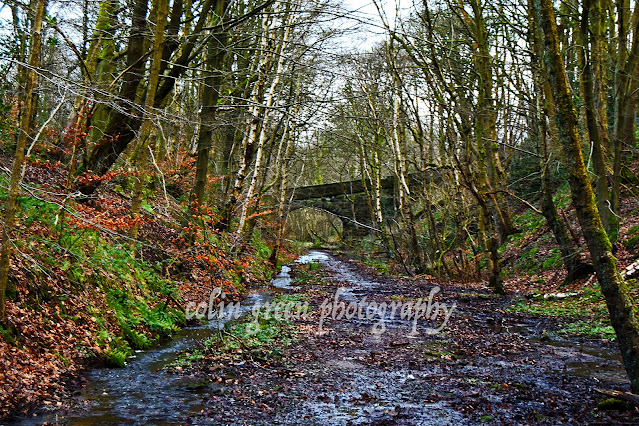Baitings Dam is a reservoir built to supply Wakefield with fresh water, completed in 1956 it is the higher of the 2 dams that block the flow of the River Ryburn here, the lower being Ryburn Dam. Construction cost around £1.4 million and took 8 years to complete, it involved flooding a small hamlet known as Baitings and sub merging the old packhorse bridge that provided a road link between Lancashire and Yorkshire, the bridge still stands and is revealed every time the water level is low. The bridge was replaced by a concrete structure called Back O'th Heights Bridge which gives a good indication of how high the dame is when full by the time marks just underneath the road level. When full the dam can hold over 113,000,000 cubic feet of water, or approx. 703,858,407 gallons.
Baitings is fed by runs offs from the local moorland and is the start of the River Ryburn that flows down the valley eventually reaching the River Calder at Sowerby Bridge approx 6 miles down the valley. It also flows in to the Ryburn Dam a little lower down the valley and built in 1933, also to supply water to Wakefield.
The dam must be somewhere near a historically low level now, the bridge completely uncovered and recently a sluice gate has appeared. I am assuming this was to regulate the flow in to the Ryburn Dam prior to Baitings being built. There was a footpath bridge between this sluice gate and the dam head but the water hasn't got low enough yet to reveal wether this is still there. Maybe a couple more weeks of low rainfall and it might appear if still there.
These pictures were taken on the 24th September 2022 using a Nikon d330 SLR camera, they can be seen below and on Clickasnap full size, resolution and un-watermarked.
Thanks for looking and please take a moment to share and follow me on social media.
Clicking any image will open a link in another window to the version on Clickasnap.
All the images remain the copyright of Colin Green.


























































